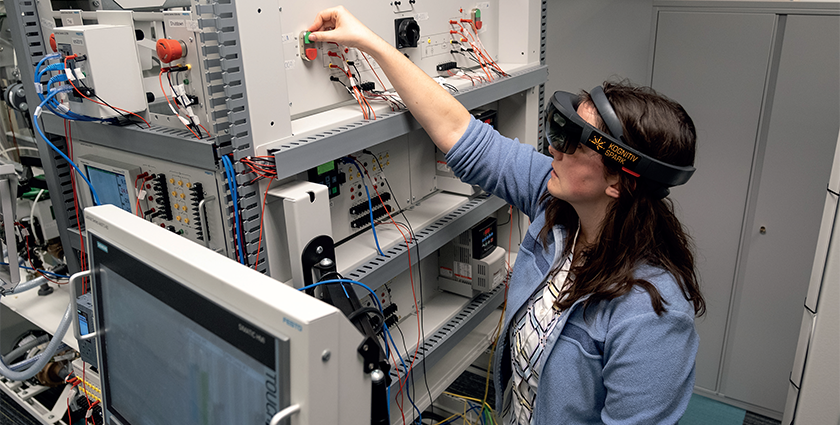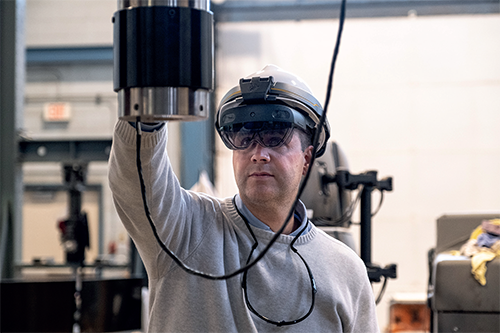
The future is here
The rail industry is facing a mass exodus of workers. As many as 15,000 rail industry employees are set to retire by 2025, and when these workers call time on their careers, their expert knowledge leaves with them. To add complexity to this concern, much of this knowledge is entirely undocumented, with organizations rarely facilitating transfer of information before workers depart.
Whenever this happens, companies suffer a net loss as skills shortages become apparent, and this is further exacerbated by the pace of change in railway and industrial engineering. The number of unplanned scenarios and increased complexity of tasks adds to the seriousness of the issue. However, as technology evolves and becomes more sophisticated over time, engineering knowledge is more quickly becoming outdated.
With adaption critical, the employees best placed to adapt are those most in-tune with current processes and are likely to be older and more experienced. While younger engineers will be keen to take on new skills, developing their experience baseline is a critical foundation to enable them to adapt as quickly.
Empowering railway workers
To battle this issue, technology that empowers railway workers is pertinent to augmenting their cognitive capabilities and ultimately assisting them in navigating complex situations and dynamic environments. An example of this is mixed reality-based worker support, where physical reality and digital content comes together to allow employees to interact with real-world and virtual objects, which can be applied to a multitude of tasks and projects.
Remote workers are able to communicate with older industry experts via a video or audio call when assistance with a complex issue is needed. Even more beneficial is the fact that the older industry expert can be located anywhere, while still being able to see what the remote worker sees and utilize holographic assets to help support completion of the task. This can all be achieved while keeping the user heads-up and hands-free.
Adopting this approach is highly valuable during complex operations. Having the ability to tackle issues in real-time with mixed reality technology is especially beneficial in eradicating any equipment downtime and reducing the time-to-resolution. On top of this, the expert engineer doesn’t have to spend time or money travelling to a site to supervise or undertake an engineering operation.
Employees undertaking an operation for the first time are also more likely to retain information and knowledge from learning on-the-job, as opposed to reading a manual about how to do it before undertaking a task.
Varying applications
Beyond the rail industry, mixed reality can be applied to everything from bagging machine repair on the production line to troubleshooting satellite assembly operations. Whatever the application, the focus is on efficiently completing the job and an additional benefit is the tuition of younger engineers as they learn on-site. In addition, mixed reality is already widely used for both routine inspections and ongoing equipment maintenance, plus the more complex troubleshooting and problem-solving.
It’s likely to be the case that some workers are hesitant to use new technology, but such devices are intuitive and easy to get to grips with, particularly for those already used to navigating a smartphone. Workers do however have to show a willingness to try something new, and the best way to ensure adoption is to begin with the enthusiasts. These workers can then show others the benefits and encourage widespread usage.
Many organizations will likely have reservations about the cost of implementation. However, with regular use and implementation across a wide number of workers in the organization, the technology essentially pays for itself and provides a rapid return on investment (ROI). ROI is also improved from saved costs as experts don’t need to travel to site and incur any related costs.
A bright future
Mixed reality is the future for the rail and transport sector. The ongoing issue in less experienced workers missing out on support when inspecting, maintaining and repairing equipment has raged on, and mixed reality technology provides the answer. As the industry better identifies how its workers can be supported, the conversation between vendor and customer is now more focused around defining use cases and operationalizing the solution, both in terms of worker support and transferring of knowledge.
The wider advantages of the technology will become more apparent over time. Hardware performance will improve, battery life will be longer and headsets will become smaller. This will enable such devices to be used more regularly and become part of an engineer’s daily toolkit, rather than just one-off scenarios.
As 5G becomes more widely available and low earth orbit satellites gain in number, usage of mixed reality will also grow, while security will also need to be a key consideration as this happens. Ultimately though, these developments will lead to richer applications and broader use cases, creating a bright future ahead for the technology in the rail and transport sector.
For a list of the sources used in this article, please contact the editor
Yan Simard is CEO at Kognitiv Spark. Since 2016, Kognitiv Spark has worked closely with global partners to guide industrial augmented reality solution development, with an emphasis on user-centered development. Led by an executive team with deep expertise in cybersecurity, oil & gas, industrial engineering and aerospace & defense, Kognitiv Spark delivers robust and integrated solutions that surpass advanced performance and security requirements.
www.kognitivspark.com